Information/Write-up
CCMC, originally the Canadian Creative Music Collective, formed in Toronto in 1974 as a radical experiment in improvisation-as-composition. The musicians who came together were united by a desire to erase the traditional lines between composer and performer and to create music that was spontaneous, fluid, and self-regulating. They described themselves as a kind of multi-headed composer, “a six-brained, twelve-handed individual,” with each performance treated as a finished work. Their sound was never pinned down to a single style: sometimes playful, sometimes chaotic, sometimes lyrical, it could incorporate melody, silence, noise, electronics, toys, and everyday objects with equal ease. Unlike European groups that leaned toward austerity or American free jazz ensembles defined by intensity and anger, CCMC embraced an openness that allowed humor, texture, and unpredictability to coexist.
The original lineup included Michael Snow on trumpet and piano, Peter Anson on guitar and later synthesizer, Graham Coughtry on trombone, Larry Dubin on drums, Greg Gallagher on saxophones, Nobuo Kubota on saxophones, Allan Mattes on bass and electronics, Casey Sokol on piano, and Bill Smith on saxophones. Membership shifted over the years—Coughtry, Gallagher, and Smith left by the late 1970s, Dubin passed away in 1978, and Anson departed in 1979. Later additions included John Kamevaar on electronics and drums in 1981 and Paul Dutton on voice in 1989. Through each change, the group maintained its identity as a collective of improvisers devoted to free creation.
CCMC quickly became inseparable from the story of The Music Gallery, the artist-run venue they founded in 1976 with the support of a Canada Council grant. The Gallery offered rehearsal and recording space, instrument-building workshops, and became a hub for new music in Toronto. Twice a week, CCMC performed there, recording nearly every concert. The group’s Music Gallery Editions label issued a series of LPs documenting this work, while the magazine Musicworks provided a written forum for the ideas surrounding it. Their archive of performances runs into the hundreds, a unique record of Canadian experimental practice.
The music itself was protean. A performance might begin with muted trumpet and bowed bass, shift into hammered guitar and marimba textures, and suddenly erupt in whistles, crackle boxes, or found percussion. Pieces often unfolded in sections, with musicians trading instruments and roles midstream. The detailed recordings from 1977, later collected as Volume Three, show Snow, Sokol, Mattes, Dubin, Anson, and Kubota moving seamlessly between small-group dialogues and large ensemble surges, their improvisations captured by John Oswald behind the tape recorder. Later works such as Free Soap and Without a Song expanded further into electroacoustic sound, using synthesizers, tape, and everyday objects alongside conventional instruments.
What endures from CCMC is not only a body of adventurous recordings but the infrastructure and community they created. The Music Gallery continues to operate nearly five decades later, still carrying forward the spirit of exploration and openness first championed by the collective. CCMC themselves remain a defining voice in Canadian avant-garde music, remembered not just for their records but for the way they reimagined what music-making could be: collective, spontaneous, irreverent, and always alive in the moment.
-Robert Williston
Side One – “23APR76” (15:00)
Michael Snow: piano
Bill Smith: soprano saxophone
Allan Mattes: bass
Nobuo Kubota: baritone saxophone
Larry Dubin: drums
Graham Coughtry: trombone
Peter Anson: guitar
Side One – “16JUL76A” (11:28)
Casey Sokol: piano
Allan Mattes: bass
Nobuo Kubota: baritone saxophone
Larry Dubin: drums
Graham Coughtry: trombone
Peter Anson: guitar
Side Two – “16JUL76B” (10:03)
Casey Sokol: piano
Bill Smith: soprano saxophone
Nobuo Kubota: soprano saxophone
Larry Dubin: drums
Graham Coughtry: trombone
Peter Anson: guitar
Side Two – “17JUL76” (4:46)
Casey Sokol: electric piano
Michael Snow: acoustic piano
Side Two – “04JUN76” (8:27)
Casey Sokol: piano
Michael Snow: trumpet
Bill Smith: soprano saxophone
Nobuo Kubota: soprano saxophone
Larry Dubin: drums
Graham Coughtry: trombone
Recorded live at the Music Gallery, Toronto, Ontario
Photography by Peter McCallum
Liner notes:
The music on this record was recorded at the Music Gallery in Toronto, at some of the regular Friday night concerts of the Canadian Creative Music Collective. The CCMC is a free music orchestra which has evolved its own unique style of collective, real-time composition. The organization of the CCMC’s music expresses a personal commitment to a non-prescriptive “natural” order. Individual decisions determine a dynamic present, leaving a “wake” that is the temporal architecture, the composition. Just as the act of listening objectifies the music, the music, the recording makes it an artifact. The tape is an electroacoustic notation system which assigns the purely transitive tasks to machines. Such a method of realization allows no afterthought, but the complex instantaneous feedback process which composes the music is refined and developed by feedback from the historical record.
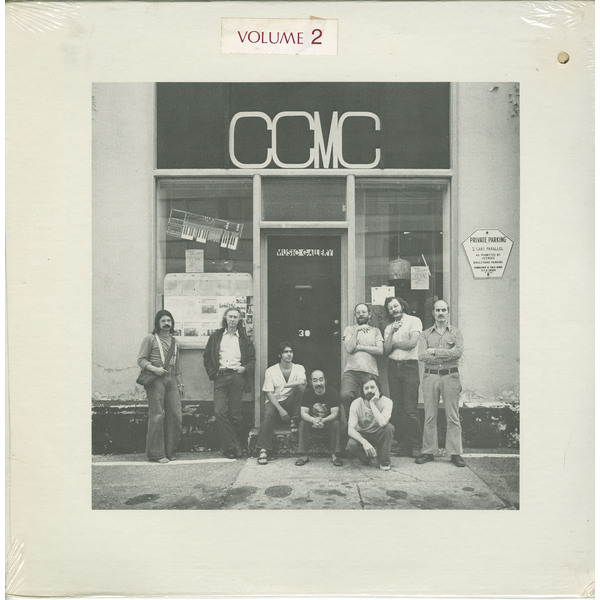
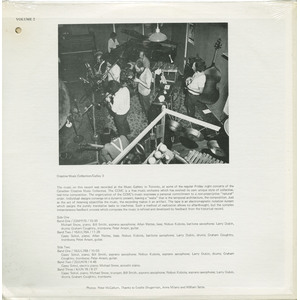
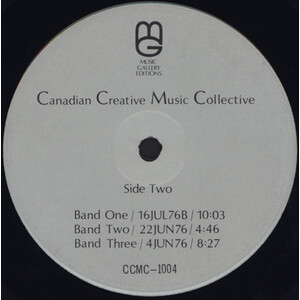
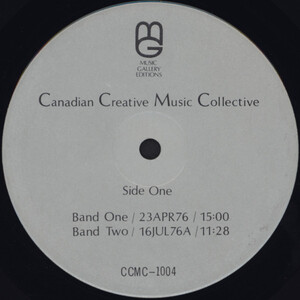
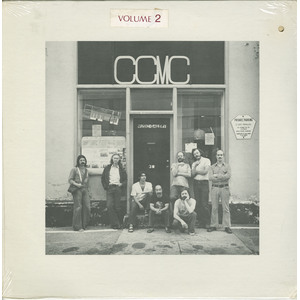
No Comments